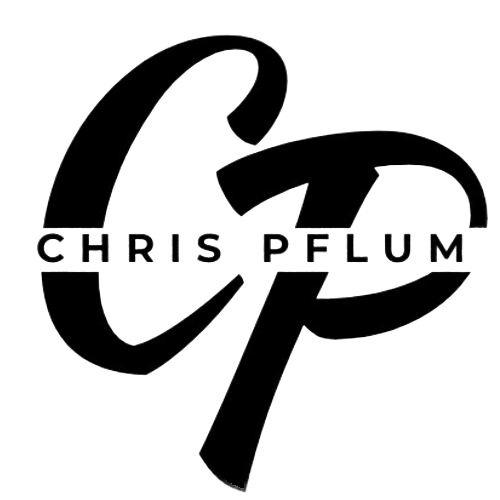As applications demand faster response times and better scalability, caching becomes one of the most crucial optimization strategies in a cloud environment. AWS offers a rich set of tools and services to implement caching at multiple layers—from edge locations, to in-memory caching, to highly-integrated database acceleration.
Let’s walk through the various levels at which you can cache data in an AWS-hosted application, how they work, when to use them, and the associated cost trade-offs.
1. Edge Caching with Amazon CloudFront
Use Case: Static website assets, APIs, media content, dynamic site acceleration.
What It Is: Amazon CloudFront is AWS’s Content Delivery Network (CDN) that caches your content at edge locations around the globe. CloudFront brings your data closer to users, reducing latency and offloading requests from your origin servers like S3, EC2, or API Gateway.
Pros:
- Global low-latency content delivery.
- Supports static and dynamic content.
- Integrated with Lambda@Edge for real-time request/response customization.
Cost Consideration:
- Charges based on: Data transfer out, HTTP/HTTPS requests.
- Typical price: $0.085/GB (first 10TB/month in US), $0.0075 per 10,000 requests.
Cost Efficiency: Very cost efficient for static and frequently accessed content. CloudFront also reduces costs at the origin (e.g., S3 or EC2) by offloading traffic.
2. Application Layer Caching with Amazon ElastiCache
Use Case: Session storage, user profiles, shopping carts, frequent query results.
What It Is: ElastiCache provides in-memory key-value caching through Redis or Memcached. It’s ideal for data that changes often and is accessed frequently—like user sessions or hot data items.
Pros:
- Ultra-low latency (sub-millisecond).
- Rich data types (with Redis).
- Scalable and managed with clustering, replication, and backup options.
Cost Consideration:
- Charges based on: Node type, storage, data transfer.
- Example: cache.r6g.large (13.07 GiB): ~$0.112/hour.
- Smaller options like cache.t4g.small: ~$0.020/hour.
Cost Efficiency: Moderate cost depending on the usage patterns. Best for apps with high read-write demand on dynamic data.
3. In-Process (Application Memory) Caching
Use Case: Function memoization, frequently-used config, lightweight data within the same server.
What It Is: This is caching within your application’s own memory space—think of Python dictionaries, Java’s Guava cache, or Go’s sync.Map. It doesn’t rely on any external infrastructure.
Pros:
- Fastest access (no network latency).
- Simple and free (just memory usage).
- Ideal for immutable or rarely changing data.
Cost Consideration:
- No AWS service cost, but increased memory use might require larger EC2 or container instances.
Cost Efficiency: Cost efficient for small-scale or single-node services. Not suitable for multi-node environments due to a lack of data sharing.
4. Database Caching with Amazon ElastiCache
Use Case: Query results caching to offload RDS or Aurora DBs.
What It Is: You can also use ElastiCache to store the results of frequently run or expensive database queries. Rather than hitting the DB every time, your application first checks the cache.
Pros:
- Offloads reads from your database.
- Reduces query latency.
- Especially useful for read-heavy workloads with low data change frequency.
Cost Consideration:
- Similar to standard ElastiCache pricing.
- Still cheaper than scaling RDS/Aurora read replicas at large scale.
Cost Efficiency: A small ElastiCache node can replace multiple DB read replicas if used correctly, providing a high cost efficiency.
5. DynamoDB Accelerator (DAX)
Use Case: High-performance, read-intensive applications built on DynamoDB.
What It Is: DAX is a fully managed, in-memory cache that integrates natively with DynamoDB. It delivers microsecond response times for reads, and requires minimal code change via SDK support.
Pros:
- Microsecond latency for eventually consistent reads.
- Seamless with existing DynamoDB APIs.
- No manual cache management—DAX handles cache invalidation and coherence.
Cost Consideration:
- Charges based on: DAX node type and hours used.
- Example: dax.r5.large: ~$0.237/hour.
- Clustered configurations add redundancy but also increase cost.
Cost Efficiency: More cost-effective than increasing DynamoDB read capacity units (RCUs) or using global tables for performance scaling.
6. Aurora Query Caching
Use Case: Repeated queries on similar data sets, analytics dashboards, OLAP-style reads.
What It Is: Aurora includes an internal query cache that stores query results in memory. If the underlying data hasn’t changed, the same query can be served instantly from cache without touching disk or performing computation.
Pros:
- Transparent to the developer.
- Reduces database load and response time.
- Built into Aurora without additional cost.
Cost Consideration:
- Included in Aurora pricing—no extra charge for using the cache.
- Aurora instance memory size determines effectiveness of caching.
Cost Efficiency: Excellent for applications with predictable query patterns. Consider optimizing query structures to maximize cache hits.
Comparing Cost & Performance Across Layers
| Caching Layer | Latency | Data Type | Cost Efficiency | Best Use Cases |
| CloudFront | ~50–100ms | Static assets, media | Very High (per GB) | Global static content delivery |
| ElastiCache (Redis) | <1ms | Dynamic, structured data | Moderate to High | Sessions, hot data, leaderboards |
| In-Process Cache | <0.1ms | Configs, local state | Very High (RAM only) | Function-level cache, immutable data |
| DAX (DynamoDB) | <1ms | DynamoDB items | High for DynamoDB users | High-speed read access with consistency |
| Aurora Query Cache | <5ms | SQL query results | Built-in | Dashboards, frequent read queries |
| ElastiCache for DB | <1ms | Query results | High | Reducing DB replica pressure |
Choose the Caching Strategy that Works Best for Your Application
A well-designed caching strategy can transform your application’s responsiveness and scalability, often with a significant reduction in cost. But you should choose which caching method or methods you use based on the specific needs of your application. There is no single approach that works best for all apps.
Applications serving a wide public audience might be better served by edge caching. Whereas internal apps with frequent read/write transactions will probably get better leverage out of something like Elasticach or even in-database caching. And you can even mix and match various strategies based on the end-to-end application flow.
The most important thing to note is that by combining these layers strategically, you can build resilient, high-performance applications that scale cost-effectively across the globe.




